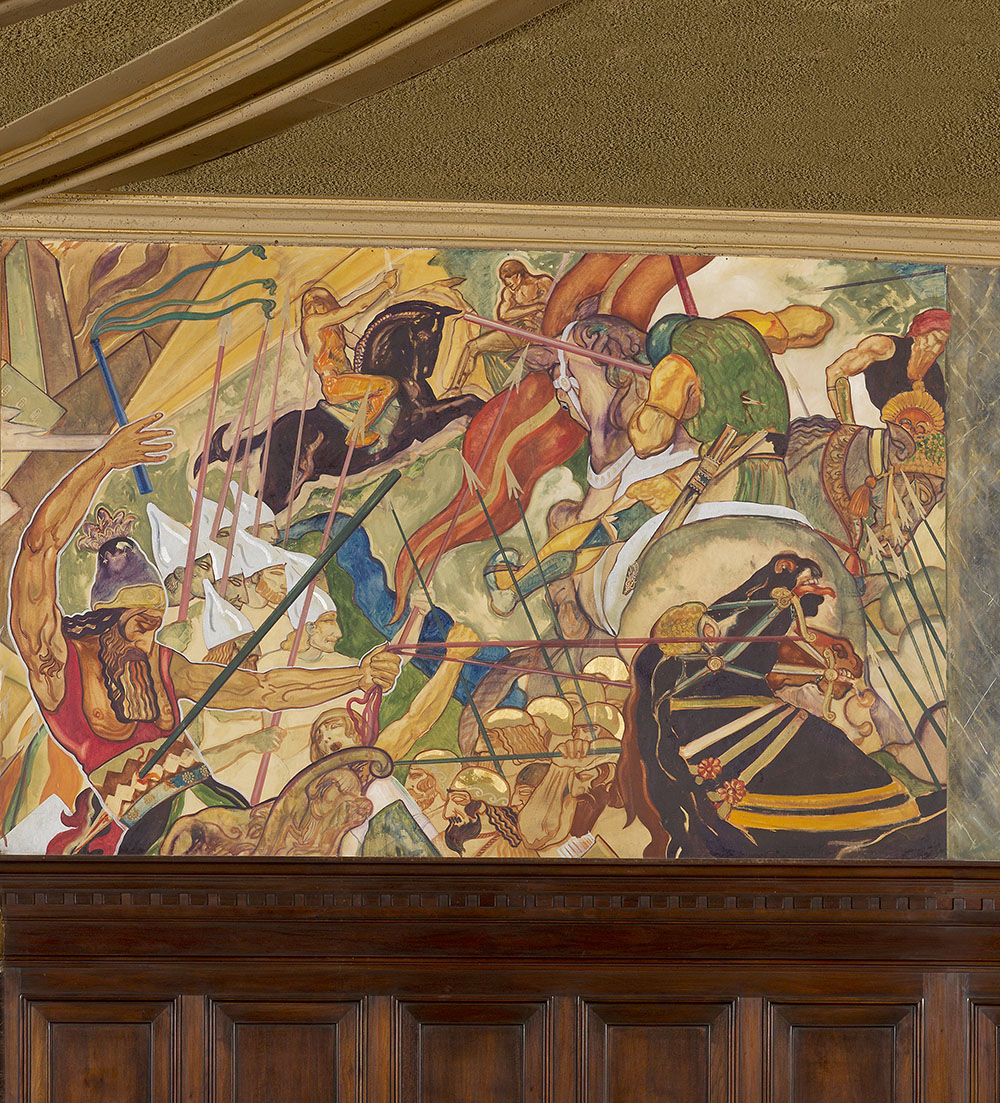Wilshire Boulevard Temple - The Wars of Israel and Judah

- In Magnin's Words
- Cinematic Influences
- Source/Citations
Rabbi Edgar F. Magnin described Ballin's murals in a book published in 1974:
"This panel depicts the wars of Israel and Judah with the surrounding nations between the eleventh and ninth century B.C.E. During this period there was continued strife, both defensive and offensive, with the Philistines, Moabites, Edomites, Arameans, and Assyrians."
"This panel depicts the wars of Israel and Judah with the surrounding nations between the eleventh and ninth century B.C.E. During this period there was continued strife, both defensive and offensive, with the Philistines, Moabites, Edomites, Arameans, and Assyrians."
The composition of this panel of the mural draws on Ballin's strengths both as a painter and a filmmaker to create a dynamic battle scene. Ballin uses figures of multiple sizes, each painted with different levels of light, to create action on multiple planes and depths. Each of the figures is in action and appears to be moving, animating the piece with energy that gives it vibrancy and life. Ballin also uses costumes to differentiate between the "sides" of the battle: the soldiers are denoted by their headwear, the horsemen's rank signified by their uniforms. There are sharp, steely weapons, dramatic color, and even a little bit of gore, all the hallmarks of a great battle scene from a film. One can almost hear the war cry emanating from the figure in the foreground.
Caption from Rabbi Edgar F. Magnin's book, The Warner Murals in the Wilshire Boulevard Temple, Los Angeles, California, published by the Wilshire Boulevard Temple, 1974.
| Previous page on path | Wilshire Boulevard Temple - Gallery, page 6 of 12 | Next page on path |

Discussion of "Wilshire Boulevard Temple - The Wars of Israel and Judah"
Add your voice to this discussion.
Checking your signed in status ...